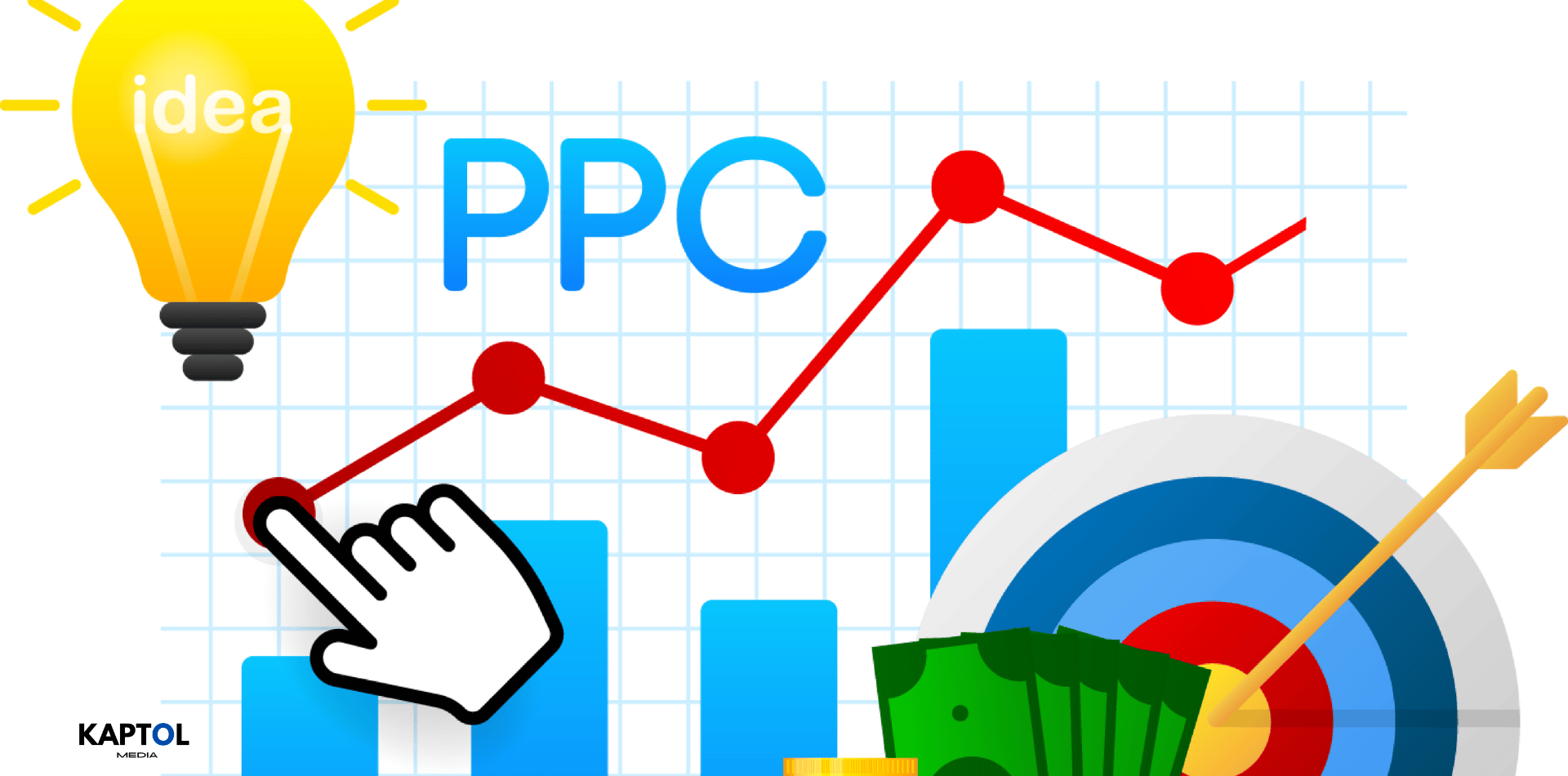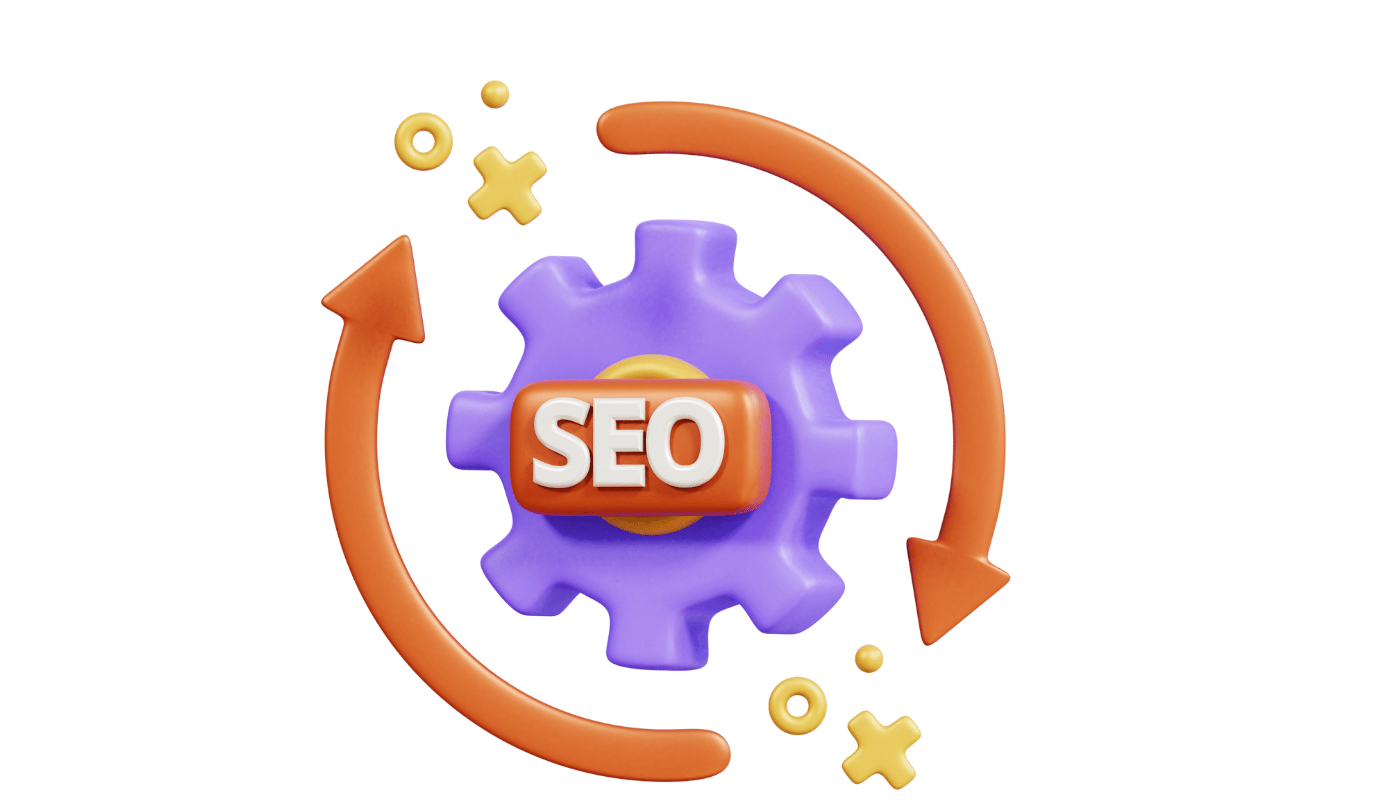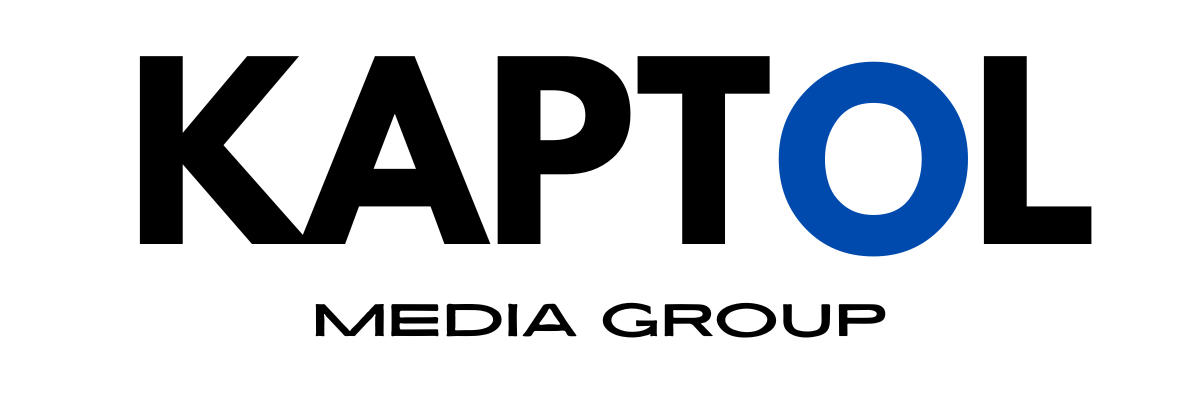What is SEO?
What is SEO? A Comprehensive Guide to Search Engine Optimization.

In today's digital age, having an online presence is crucial for businesses and individuals alike.
Whether you're a startup, a seasoned corporation, or a content creator, the visibility of your website in search engine results can be a game-changer for your success. This is where Search Engine Optimisation, or SEO, comes into play. SEO is the art and science of enhancing the visibility and ranking of websites in organic search engine results.
Let's delve deeper into what SEO is, why it matters, and how you can effectively leverage SEO strategies to boost your online presence.
Understanding SEO
Definition and Core Concepts
Search Engine Optimisation (SEO) refers to the process of optimising a website to increase its visibility when people search for products or services related to your business in Google, Bing, and other search engines. The better visibility your pages have in search results, the more likely you are to garner attention and attract prospective and existing customers to your business.
How Search Engines Work
To understand SEO, it's essential to know how search engines work.
Search engines aim to provide the best service for their users. This means delivering results on the search engine pages that are not only high quality but also relevant to what the searcher is looking for.
To achieve this, search engines will scan, or "crawl," different websites to better understand what the site is about. This helps them deliver more relevant results to those who are searching for certain topics or keywords. Similarly, the search engines will scan the site to determine how easy it is to navigate and read, rewarding user-friendly sites with higher rankings on the search engine results page (SERP).
Key SEO Factors
SEO activities can be broadly divided into two categories:
On-Page SEO: Enhancing Content and User Experience
On-page SEO is a cornerstone of successful search engine optimisation because it pertains to the elements of your website that you can control directly. This facet of SEO is about making your site more accessible and readable by both search engines and human visitors.
Here, we’ll delve deeper into the critical components of on-page SEO and how you can optimise these elements to boost your website's performance in search results.
1. Content Quality and Relevance
The quality of your content is perhaps the most crucial factor in on-page SEO.
High-quality content must be engaging, informative, and tailored to the needs of your audience. It should answer the questions your visitors have or provide them with solutions or insights they couldn't easily find elsewhere. To ensure your content is relevant, perform keyword research to discover what your target audience is searching for, and craft your content around these topics.
2. Headlines and HTML Tags
- Title Tags: These are perhaps the most critical HTML tags to consider. A well-optimised title tag should include your primary keyword and, if possible, a secondary keyword. It should also be enticing enough to encourage users to click through to your website.
- Meta Descriptions: While they don’t directly influence rankings, meta descriptions are crucial for providing a summary of your content and convincing potential visitors that your page holds the answer to their query.
- Header Tags (H1, H2, H3, etc.): Proper use of header tags helps organise your content not only for readers but also for search engines. Headers provide structure and context, improving user engagement and accessibility.
3. Optimising Images
Images can significantly impact your site's load time and user engagement. Optimising images involves compressing them to reduce their file size without sacrificing quality and using descriptive filenames and alt text. Alt text helps search engines understand what the image is depicting, which is crucial for web accessibility and can also help your images appear in image search results.
4. URL Structure
URLs should be concise, readable, and include relevant keywords. A well-crafted URL provides both humans and search engines with an indication of what the destination page is about. For instance, a URL like
www.yoursite.com/seo-tips-for-beginners
is much more informative than
www.yoursite.com/post123
.
5. Internal Linking
Internal links are links that go from one page on a domain to a different page on the same domain. They are commonly used in main navigation and are crucial for establishing site architecture and spreading link equity (ranking power). Well-placed internal links can lead visitors to more of your content and improve the search engine's ability to index your pages more thoroughly.
6. Mobile Responsiveness
With mobile devices driving a significant amount of internet traffic, your website must perform well on mobile devices. Google uses mobile-first indexing, which means it predominantly uses the mobile version of the content for indexing and ranking. A responsive site adjusts seamlessly to the size of any device, providing a good user experience.
7. Page Speed
Page speed is a critical factor in both search rankings and user satisfaction. Websites that load quickly provide a better user experience. Tools like Google's PageSpeed Insights can help you identify what slows down your site and how to make it faster.
8. Expertise, Authoritativeness, and Trustworthiness (E-A-T)
Google has emphasised the importance of E-A-T as major factors in a website's ranking. These factors are particularly crucial for YMYL (Your Money or Your Life) websites, which cover topics like medical advice, legal advice, financial advice, etc. To boost your E-A-T:
- Ensure that your content is written by credible authors with verifiable credentials.
- Include authoritative links and citations in your content.
- Provide clear and honest information about your company, such as through an "About Us" and "Contact" page.
Effective on-page SEO involves a detailed approach to optimising all aspects of your website that impact your search engine rankings.
It's not just about making your site friendly for search engines, but also about enhancing the user experience. By focusing on these elements, you can help ensure that both your target audience and search engines can find and appreciate your content.
Off-Page SEO: Building Your Website's Authority
Off-page SEO is a pivotal component of a comprehensive SEO strategy, focusing primarily on external factors that impact your website's position in search engine results. Unlike on-page SEO, which deals with the aspects of your website that you can control, off-page SEO involves improving the perception of your website and business by both users and search engines through other avenues, predominantly backlinks.
Let's explore various facets of off-page SEO, including the key strategies for building and enhancing your site's authority and visibility.
1. Backlinks: The Cornerstone of Off-Page SEO
Backlinks, also known as inbound links or external links, are links from other websites that point to your website. They are among the most significant factors in how search engines understand the relevance, authority, and trust of your website. Not all backlinks are created equal.
Here are some types of backlinks differentiated by their quality and impact:
- Natural Links: These are given without any action on the part of the website owner. For example, a food blogger adding a link to a post that points toward their favourite produce suppliers.
- Manually Built Links: These are acquired through deliberate link-building activities. This includes things like asking influencers to share your content or customers to link back to your website.
- Self-Created Links: These can come from practices such as adding a backlink in an online directory, forums, blog comment signatures, or a press release with optimised anchor text. Some self-created link strategies tend to be frowned upon by search engines if they're designed to manipulate search rankings.
2. The Quality and Relevance of Links
The value of a backlink also depends on the quality and relevance of the site providing the link. Links from authoritative, high-traffic websites are more beneficial than those from lesser-known sites. Additionally, links from sites closely related to your site's niche will generally have a stronger impact on your rankings than links from unrelated sites.
3. Guest Blogging and Content Marketing
Guest blogging on reputable sites can not only drive traffic back to your website but also build your brand's reputation. Similarly, content marketing strategies, such as publishing white papers, eBooks, and engaging blog posts, encourage others to link to your content for its informative value.
4. Social Media Marketing
While social media links don’t directly influence search rankings, social media platforms enable wide content distribution, which can lead to your content being picked up by influencers and other media outlets who might link back to your site.
5. Influencer Outreach
Connecting with influencers within your industry can help spread your content to a broader audience. If influencers share your content, it’s likely to lead to new inbound links from their followers and fanbase, increasing your content's reach and authority.
6. Forums and Community Engagement
Participating in industry forums and communities can help you get your site's name out there. By contributing to discussions and providing insightful comments, you can encourage others to want to learn more about you, leading to more natural links.
7. Brand Mention Reclamation
Sometimes, your brand or content is mentioned without a link. Finding these mentions and requesting the site owner to add a link to your website is a straightforward way to gain beneficial backlinks.
8. Reviews and Testimonials
Earning reviews and testimonials not only boosts your credibility but also increases your brand’s visibility and encourages others to link to your site. Ensure that your business is listed on platforms like Google My Business, Yelp, and other relevant industry-specific directories.
Off-page SEO is essential for building and maintaining the authority of your website.
While it requires ongoing effort and a strategic approach, the benefits are substantial. By enhancing your website’s backlink profile through various reputable methods, you can improve your site’s visibility, credibility, and ultimately, its rankings in search results.
Remember, successful off-page SEO strategies are about quality and relevance, not just quantity.
Why SEO is Important?
In the vast sea of the internet, SEO is the beacon that helps guide users to your website.
Here are some reasons why SEO is essential:
- Increases Visibility and Traffic: Top positions on the search engine result pages receive a majority of the impressions and clicks, so ranking in these top positions can result in significant traffic increases for your website.
- ROI: SEO provides trackable and quantifiable results, regardless of whether you are an e-commerce or non-e-commerce site so there are no qualms when it comes to ROI.
- Cost Effectiveness: SEO is one of the most cost-effective marketing strategies because it targets users who are actively looking for your products and services online.
- Improves Site Usability: SEO simultaneously helps to make your website more navigable for users as well. SEO consists of rearranging the site’s architecture and links to make pages within the website easier to find and navigate.
How to Implement Effective SEO Strategies.
Implementing Effective SEO Strategies: The Role of Keyword Research
Keyword research is the foundation of search engine optimisation (SEO) and plays a crucial role in shaping any successful online marketing strategy. By identifying the most relevant and popular keywords for your site and industry, you can effectively tailor your content and marketing efforts to meet the needs of your audience, thereby improving your visibility and rankings in search engine results.
Here's a detailed exploration of how to conduct keyword research and leverage your findings to enhance your SEO efforts.
1. Understanding Keyword Relevance
The first step in keyword research is understanding what terms or phrases your potential customers are using to search for your products or services. These keywords need to be closely aligned with the content on your website and the services or products you offer. The relevance of keywords ensures that the traffic driven to your site is qualified — that is, visitors who are most likely to engage with your content, convert into leads, or become customers.
2. Tools for Keyword Research
Various tools can aid in keyword research by providing insights into the keywords' popularity, search volume, and competition.
Some of the most popular tools include:
- Google Keyword Planner: Useful for finding keywords related to your business and understanding how searches change over time.
- SEMrush: Offers detailed keyword analysis and competitive insights.
- Ahrefs: Known for its robust keyword tools and backlink analysis.
- Moz Keyword Explorer: Provides keyword suggestions, SERP analysis, and more.
- Ubersuggest: A free tool by Neil Patel that provides keyword suggestions, competition, search volume, and potential traffic.
These tools can help you identify both 'short-tail' keywords that are often more generic and highly competitive, and 'long-tail' keywords, which are more specific phrases and tend to have less competition.
3. Analyzing Search Intent
Understanding the intent behind the keywords—why a user types a particular phrase into a search engine—is crucial.
There are typically four types of search intents:
- Informational: The user seeks information, such as "how to make a coffee."
- Navigational: The user searches for a specific website or app, like "Facebook login."
- Transactional: The user intends to complete a transaction, such as "buy coffee beans online."
- Commercial: The user looks to make a purchase soon and wants to compare products or find the best one, e.g., "best coffee beans for espresso."
Tailoring your content to match the correct user intent can significantly enhance the relevance and effectiveness of your SEO strategy.
4. Keyword Optimisation
Once you've identified your target keywords, integrating them into your website is the next step.
This integration should be natural and contextually appropriate. Keywords should be included in:
- Title tags
- Meta descriptions
- Headings and subheadings
- Throughout the content body
- URLs
- ALT tags for images
However, avoid keyword stuffing—overusing keywords to the point where it harms the readability of your content—as this can lead to penalties from search engines.
5. Monitoring and Adapting
Keyword trends can change due to new industry developments, cultural shifts, or changes in user behaviour. Regular monitoring of keyword performance, using tools like Google Analytics and Google Search Console, can provide insights into what keywords are driving traffic and conversions. Based on these insights, you can adapt your strategy by optimising existing content or creating new content to target emerging keywords.
Keyword research is an ongoing, vital process for effective SEO. By understanding and strategically targeting the right keywords, you can significantly improve your website’s search engine ranking, attract a more targeted audience, and enhance your overall online presence.
Remember, the goal of keyword research is not just to increase traffic but to attract the right kind of traffic that will drive conversions and achieve your business objectives.
The Importance of Content Creation
Content creation is a central pillar of any effective SEO strategy.
High-quality, engaging content not only helps to improve your site’s ranking in search engines but also engages and retains the audience you are trying to reach.
Below, we'll explore how to effectively produce content that addresses the needs of your audience and bolsters your SEO efforts.
1. Understanding Audience Needs
Before you start creating content, it's crucial to understand who your audience is and what they need. This involves identifying the problems they face, the questions they have, and the types of content they consume. Tools like audience personas and customer journey maps can help provide insights into your audience's preferences and behaviour, enabling you to tailor your content accordingly.
2. Diversifying Content Types
Different types of content can attract and engage various segments of your audience.
Here are some formats to consider:
- Blog Posts: Great for addressing specific questions or topics relevant to your audience. They should be informative, well-researched, and include actionable insights.
- Videos: Increasingly popular due to their high engagement rates, videos can be used for tutorials, behind-the-scenes looks, or product reviews.
- Infographics: Useful for presenting data or information in a visually appealing way, making complex information easier to digest.
- Podcasts: Effective for audiences who prefer audio content, allowing you to dive deep into subjects and establish a personal connection with listeners.
- Case Studies and Whitepapers: Excellent for B2B companies, these can showcase expertise and industry knowledge.
3. SEO-Driven Content Creation
While creativity is crucial, incorporating SEO principles into your content creation process is equally important.
This means:
- Keyword Integration: Naturally integrate keywords identified during your keyword research into your content to help boost its visibility in search results.
- Content Structure: Use headings and subheadings (H1, H2, H3) to structure your content not only for readability but also to include relevant keywords.
- Meta Descriptions and Title Tags: Write compelling meta descriptions and title tags that include keywords. These elements can influence whether users decide to click on your content from search results.
- Linking Strategy: Include both internal links to other pages on your site and external links to authoritative sources. This not only enhances user experience but also boosts your site's credibility and indexing.
4. Creating Evergreen Content
Evergreen content remains relevant and valuable over a long period.
This type of content can continually attract visitors to your site and is highly beneficial for SEO. Examples include how-to guides, frequently asked questions (FAQs), and industry advice. While it's important to cover trending topics and timely content, balancing this with evergreen pieces ensures a steady stream of traffic.
5. Content Freshness and Updates
Search engines favor up-to-date content, so regularly revisiting and updating your existing content is crucial. This might involve updating statistics, refreshing outdated sections, or adding new insights and resources. Such updates can rejuvenate older pages and boost their rankings significantly.
6. User Engagement and Feedback
Engaging with your audience through comments, social media, or direct feedback can provide insights into how your content is received and what improvements could be made. Monitoring metrics such as bounce rate, time on page, and social shares can also give indications of your content's performance.
Effective content creation for SEO isn't just about throwing words on a page. It requires strategic planning, understanding your audience, and integrating SEO best practices. By focusing on producing diverse, high-quality, SEO-driven content, you can better meet the needs of your audience, enhance your visibility in search results, and ultimately achieve your digital marketing goals. This approach ensures that your content not only attracts but also retains and converts your target audience.







SIGN UP FOR OUR NEWSLETTER
We will get back to you as soon as possible
Please try again later


